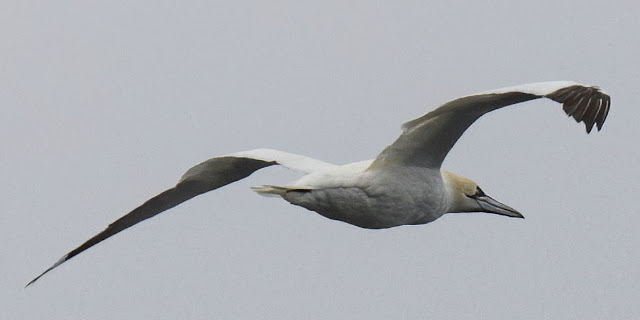We were driving onboard Ferry Baldur, which would take us across Breiðafjörður to Vestfirðir.
The second largest fjord in Iceland, Breiðafjörður is about 43 miles across, bisected by Flatey Island.
 |
| Breiðafjörður is home to White-beaked Dolphins |
 |
| Ferry Baldur |
Flatey Island
Originally, I had wanted to spend the night on Flatey Island, a tiny sliver of land formed by the weight of a great glacier during the previous Ice age. But, all rooms were booked.
Flatey is only a mile and a quarter long and three quarters of a mile wide, of which most is flat (hence its name, meaning "flat island" in Icelandic).
 |
| Approaching Flatey |
In winter, when fewer ferries sail to Flatey, the island is dark and snow-covered.
 |
| Photo: Stuck in Iceland |
Until the latter part of the last century, Flatey enjoyed healthy population growth and was for a long time, relative to size, quite populated.
 |
| A Flatey farm |
 |
| Sheep are everywhere in Iceland |
 |
| The lighthouse and a less-colorful building |
I was curious about how one stays on Flatey if you are taking a car with you. We discovered that you get off the ferry in Flatey and your car is taken to the next port (depending on which way you are traveling) and held for you.
 |
| Guests exiting the ferry to stay in Flatey |
But, I am a bit ahead of myself.
The Trip to Flatey
When we pulled out of Stykkishólmur, it was sunny and bright. But, almost immediately, we hit a bank of clouds and it grew increasingly cloudy. We experienced a few raindrops and some wind. The ride was chilly with a bit of a roll, but not unpleasant.
 |
| The weather changed as we left Stykkishólmur |
 |
| They were fairly spread out on both sides of the ship |
I wrote extensively about Atlantic Puffins in one of my blogs about Svalbard, Norway, so I won’t go into a lot of detail here. But, indulge me as I talk a little about Puffins in Iceland.
There are three types of Puffins – Atlantic, Horned and Tufted – the second two can be found in the northeastern Pacific.
 |
| Tufted, Horned (Photo: Audubon.org) and Atlantic Puffins |
 |
| Puffins are at home on the water |
 |
| A Puffin on a burrow |
They spend the next 45 days taking care of their “Puffling” before it is time for the whole family to head back out to sea.
 |
| Puffins on the wing |
 |
| A Puffin in the air |
Lots of Common Eiders ...
 |
| A small group of Eiders |
Northern Gannets
Seeing so many Puffins was so exciting that I didn’t concentrate much on these other birds, just snapping off a few photos here and there. I didn’t even notice until downloading pictures later that one of the “gulls” I shot two pictures of was not a gull. It was a Northern Gannet – my second “lifer” of the trip. And, I took only two photos!
 |
| One of my two photos |
The largest species of the Gannet family, Northern Gannets are native to the coasts of the Atlantic Ocean, breeding in Western Europe and Northeastern North America.
 |
| Photo: Oceana.org |
 |
| Photo: Roaring Earth |
Their waterproof feathers, subcutaneous fat layer, dense down feathers and tightly overlapping feathers allow them to spend long periods in cold, cold water.
 |
| Photo: Wexford People |
Northern Gannets forage for food during the day, generally by diving at high speed into the sea from as high as 230 feet above the surface.
They dive with their bodies straight and rigid, wings tucked close to the body but angled back, extending beyond the tail, before piercing the water like an arrow.
They control the direction of the dive using their wings and tail and fold their wings against the body just before impact.
Birds can hit the water at speeds of up to 62 mph, diving as deep as 36 feet below the surface and swimming down to an average 60 to 80 feet.
They have subcutaneous air sacs that control their buoyancy.
When a dive is successful, they swallow the fish underwater before surfacing, and never fly with the fish in their bill.
 |
| Photo: Audubon.org |
Larger fish are swallowed headfirst, smaller fish are swallowed sideways or tail-first. The fish is stored in a branched bag in the throat and does not cause drag when in flight.
Cool!
 |
| A Lifer! |
On to Brjánslækur
After Flatey, we saw few birds and the rest of the Ferry trip was uneventful as the sky grew increasingly dark (it felt like dusk, but 6:00 p.m. that far north is still pretty light in August).
 |
| Looking at Brjánslækur from the ferry |
 |
| Approaching the dock |
Was there any population in Vestfirðir? Not here.
 |
| A lone far near the Brjánslækur docks |
The road – a very nice, paved highway – branches at Brjánslækur. If you go east, you head toward Ísafjörður, the capital of Vestfirðir, where we would be headed in two days.
We headed west toward our lodging in Hænuvík. But, that’s subject for my next blog.












No comments:
Post a Comment